Whether additive manufacturing, generative manufacturing or rapid prototyping, components are manufactured in these processes on one 3D printer. Meanwhile he is 3D Print arrived a little further in the industry and is therefore also suitable for series and mass production. Here we present innovations and applications of 3D printers for plastics before:
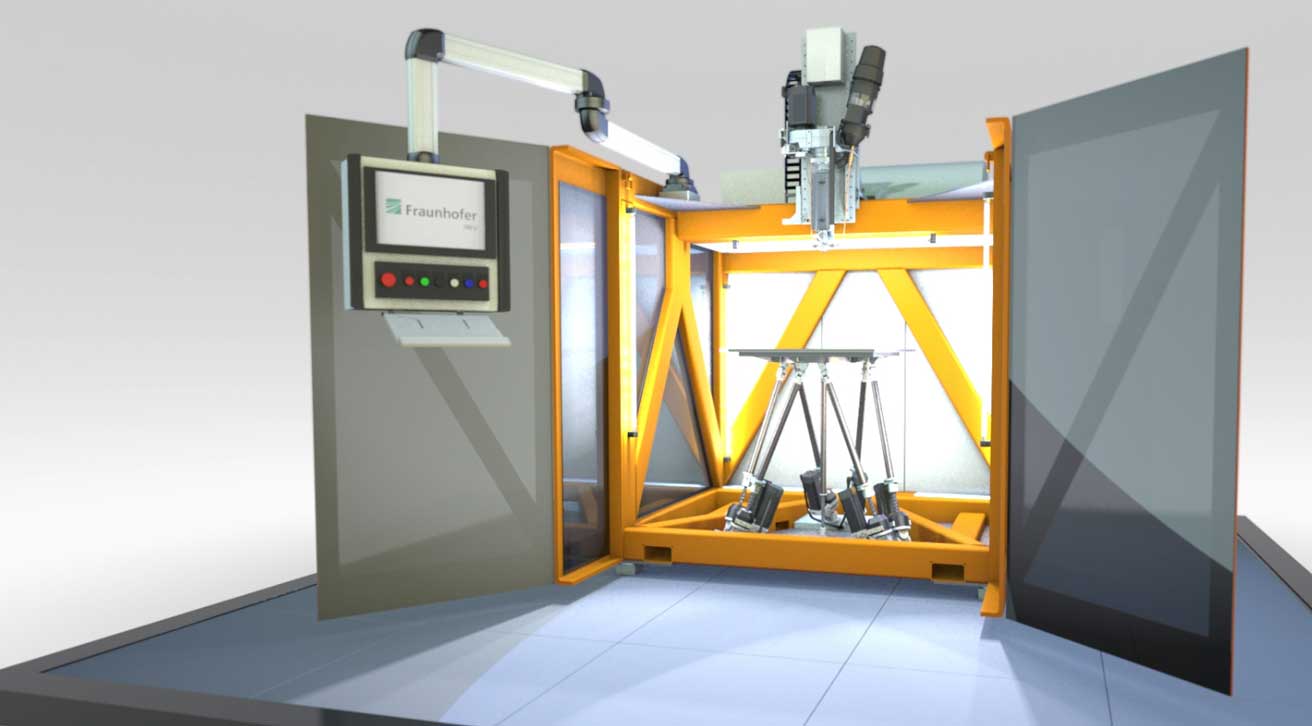
Contents
- 3D printers are no longer just for prototypes
- 3D printer innovations
- Ultra-fast polymer 3D printer
- 3D printing for the production of insect screens
- Epsilon 3D printer with improved electronics
- Liquid crystal polymer 3D printer
- 3D microprinting for printing centimeter-sized structures
- High temperature freeformer for additive manufacturing
- High-speed 3D printer industry for plastic components
- Extra large 3D printer for industry
- 3D printer produces autonomous, energy self-sufficient sailing boat
3D printers not only for prototypes
3D printing technologies are already being used in many industries and by numerous companies to create prototypes, optimize manufacturing processes and create customer-specific products. In the Automotive industry Companies like BMW and General Motors use 3D printing to create both prototypes as well as end products to create. In healthcare, companies like Stryker and Medtronic are using 3D printing to create custom medical devices and prostheses.
 Solidworks 2023 | CAD software by and for users
Solidworks 2023 | CAD software by and for users
Companies in the aerospace industry, including Boeing and SpaceX, are using 3D printing to manufacture components for planes and rockets. 3D printers are even being used in the fashion industry, such as at Adidas, where the 3D printed parts are used to create bespoke athletic shoes. Metal 3D printing and multi-material 3D printing are also becoming increasingly popular.
3D printer innovations
Which are the best 3D printers depends heavily on the specific requirements and the area of application. Below are the new developments in the industry:
Ultra-fast polymer 3D printer
16.07.2023 | The industrial 3D printer XiP Pro from Nexa3D is designed to offer the highest daily production throughput and the lowest total cost of ownership in its class. It achieves this with exponentially faster print speeds than traditional SLA and DLP-based technologies, a more powerful print engine and a build volume of 19,5 l.
3D printing for the production of insect screens
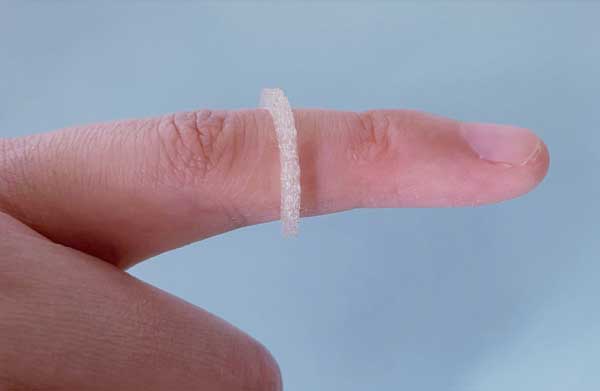 14.03.2023 | The scientists of Martin-Luther-University Halle-Wittenberg (MLU) have produced an insect repellent in a 3D printer. The 3D printer first encapsulates the insect repellent and shapes it into the desired shape. This can be a ring that the user wears on their finger, for example. The finger ring releases the agent that is supposed to drive away the mosquitoes over a longer period of time. The research team reports on the work in the "International Journal of Pharmaceutics".
14.03.2023 | The scientists of Martin-Luther-University Halle-Wittenberg (MLU) have produced an insect repellent in a 3D printer. The 3D printer first encapsulates the insect repellent and shapes it into the desired shape. This can be a ring that the user wears on their finger, for example. The finger ring releases the agent that is supposed to drive away the mosquitoes over a longer period of time. The research team reports on the work in the "International Journal of Pharmaceutics".
The researchers used this for their development Insect repellent IR3535 from Merck. "Mosquito sprays based on IR3535 have been in use worldwide for many years and are considered to be well tolerated. That's why we used the agent for our experiments," says Prof. Dr. René Androsch from MLU. It is usually applied as a spray or lotion, which promises protection for several hours. The team around Prof. Dr. However, Androsch is looking for solutions that release the drug over a significantly longer period of time. One of them is the integrated finger ring or bracelet.
Insect repellent in biodegradable polymer
With the help of special 3D printers, MLU managed to incorporate the insect repellent into a biodegradable polymer in a controlled manner. The mixture of substances was also introduced into various forms. "The basic idea is that the insect repellent evaporates continuously, i.e. is released into the environment, and then forms a barrier against insects," says the first author of the Study Fanfan You, PhD student at MLU.
How quickly the insect repellent evaporates depends on factors such as the temperature, concentration and structure of the polymer used. The team has conducted various tests and simulations and now assumes that the insect repellent at a Temperature of 37 ° C or human body temperature, takes well over a week to fully evaporate.
 2-component 3D printing filament for additive manufacturing
2-component 3D printing filament for additive manufacturing
The finger ring is initially a prototype, which the researchers used to show that a portable insect repellent basically producible on a 3D printer. The suitability of the rings under real conditions still needs to be researched. The material for the encapsulation can also be optimized.
The work was supported by the Deutsche Forschungsgemeinschaft and as part of the graduate school agripoly funded at MLU. Agripoly is funded by the state of Saxony-Anhalt and the European Social Fund (ESF).
Epsilon 3D printer with improved electronics
10.01.2023 | BCN3D introduces the new generation for its Epsilon series. This offers a new design and optimized electronics. XYZ autocalibration and local network access complete the innovations. The following video shows more details:
Liquid crystal polymer 3D printer
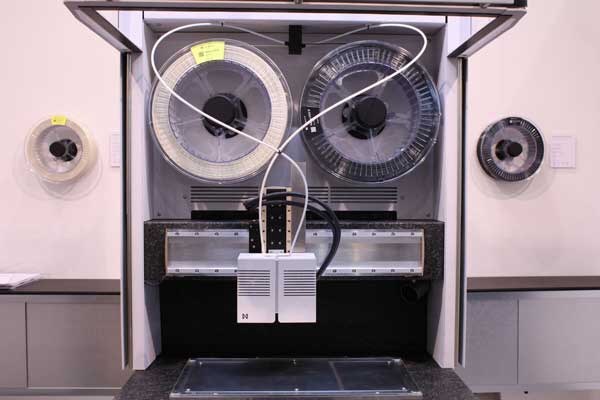 16.12.2022 | Nematx presents its NEX3 01D printer with process control for high-throughput production. Powered by a slicing algorithm and a motion control system, the device offers 3D printing capabilities with micron resolution.
16.12.2022 | Nematx presents its NEX3 01D printer with process control for high-throughput production. Powered by a slicing algorithm and a motion control system, the device offers 3D printing capabilities with micron resolution.
Because the 3D printer machine is compatible with liquid crystal polymers (LCP), it is suitable for industrial applications. These chemically and biologically inert materials are flame retardant, highly radiation resistant, and allow parts to be fabricated with an accuracy of 25 µm.
The molecular orientation of the 3D printer is controlled during the extrusion process. This allows the printing of components with very good mechanical, thermal, chemical and biological properties. The liquid crystal polymers permit a substantial more precise and faster processing than is possible with conventional materials.
Own software is used to prepare the 3D models for printing and the liquid polymer filament. NematX can print with a Modulus of elasticity of up to 25 GPa with a tensile strength of 650 MPa. The start-up won the start-up challenge at Formnext 2020.
3D microfabrication for printing centimeter-sized structures
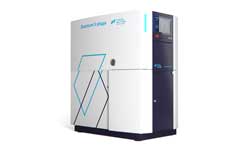 09.03.2022 | Nanoscribe introduces the Extra Large Features (XLF) Print Set, which covers the manufacturing area of the high-precision 3D printer Quantum X shape expanded. This enables microprinting of nanoscale and microscale structures on millimeter and centimeter-sized objects based on two-photon polymerization. Filigree details and particularly complex structures are retained. In particular, the new XLF Print Set accelerates the high-precision 3D Print by a multiple.
09.03.2022 | Nanoscribe introduces the Extra Large Features (XLF) Print Set, which covers the manufacturing area of the high-precision 3D printer Quantum X shape expanded. This enables microprinting of nanoscale and microscale structures on millimeter and centimeter-sized objects based on two-photon polymerization. Filigree details and particularly complex structures are retained. In particular, the new XLF Print Set accelerates the high-precision 3D Print by a multiple.
High temperature freeformer for additive manufacturing

11.10.2021 | At the Fakuma 2021, Arburg will be presenting, among other things, its portfolio for the additive manufacturing. The one specially designed for high temperature use Freeformer 300-3X has an installation space that can withstand temperatures of up to 200 ° C. An optimized temperature management cools the Freeformer accordingly, especially the axis drives, which position the component carrier with high precision to 0,022 mm in the X, Y and Z directions.
 Reading tip: Three ways to get started with generative AI
Reading tip: Three ways to get started with generative AI
At the Fakuma, Arburg will produce functional components made from the flame-retardant material PEI / PC blend, which is approved for use in the aerospace industry Ultem 9085 manufacture. The range of materials for the Arburg Plastic Freeforming (AKF) manufacturing process also includes Plastic Granules based on polyetherimide (PEI). For example, the Ultem 1010, the medically approved Ultem 1004, and the Ultem 9085 Materials.
Additive manufacturing with seamless monitoring
An important role in additive manufacturing plays the successful and complete monitoring, part-specific tracing and documentation of the process data. With the Processlog app from the Arburgxworld customer portal, which was specially developed for the Freeformer, process and construction order data can be visualized for AKF components, for example. Also information on the used 3D printer, order start, construction time, shift structure, construction room temperature etc. over the entire construction order are clearly displayed graphically.
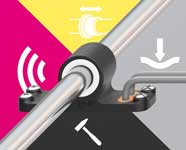 Additive manufacturing and 3D printing service
Additive manufacturing and 3D printing service
In addition to the Freeformer exhibit, Arburg is also exhibiting a 3D printer LIQ 320 from sister company Innovatiq. With this industrial 3D print Process In Liquid Additive Manufacturing (LAM), components are manufactured directly from liquid silicone (LSR).
Arburg is exhibiting at the Fakuma 2021.
High-speed 3D printer industry for plastic components
04.04.2019 | Fraunhofer IWU introduces a 3D printer combination that can finally be used to print plastic parts for industry. The "Seam-HEX" offers an enormous process speed through a combination of machine tool technology and 3D printing.
The system uses the movement system of a machine tool and a newly developed nozzle that quickly melts plastic granulate and then ejects the melted plastic at top speed.
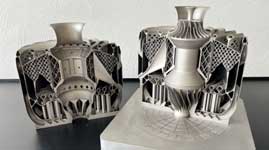 Metal 3D Printer | Amazing Possibilities
Metal 3D Printer | Amazing Possibilities
What is also new is that the machine and the process Standard plastic granules uses, which makes the process quite inexpensive. Seam-HEX prints eight times faster than comparable methods such as FLM or FDM. Thanks to the use of standard plastic granules, the material costs can be reduced by a factor of 200.
Seam-HEX owns one intelligent path adjustment: The machine also makes it possible to print onto existing components such as sheet metal. If such parts are not positioned exactly in the machine, the system recognizes this and adjusts its path during printing.
Extra large 3D printer for industry
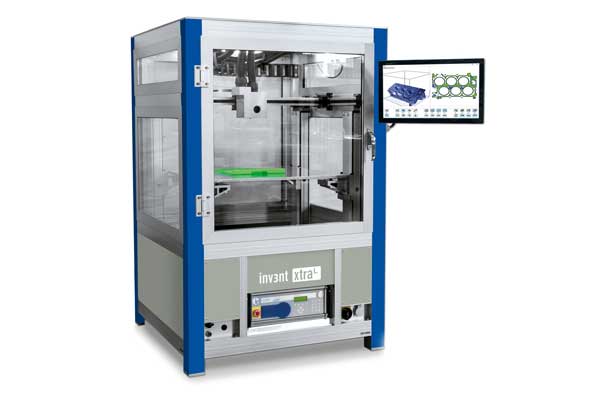 02.11.2017 | System presents the largest large-capacity 3D printer from the "Inv3nt" series for industrial applications. The largest and most individual model in the series is the Inv3nt Xtra L.
02.11.2017 | System presents the largest large-capacity 3D printer from the "Inv3nt" series for industrial applications. The largest and most individual model in the series is the Inv3nt Xtra L.
The almost arbitrary scalable FFF/FDM 3D printers With the interface-rich Xemo stepper motor control, touchscreen-optimized CNC software "Xemo NC 3D" and the touchscreen-capable slicer Inv3nt Studio, it offers everything that industrial users need to create prototypes, offer samples or development parts.
Almost any number of print heads for the Filament or granule printing can be installed, the installation space and pressure plate can be heated, and everything is housed in a robust, well-insulated housing. With this 3D printer, print spaces of up to 3000 x 3000 x 1500 mm are possible.
3D printer produces autonomous, energy self-sufficient sailing boat
 09.06.2017 | Technology learns to sail: That is the motto of the Sailing Teams Darmstadt, that has set itself the task of developing and building a sailing boat that can cross the Atlantic autonomously and with self-sufficiency in terms of energy. Various teams work for the following areas: energy supply, course determination, electronics, control engineering, mechanics, organization and software. The German Rep X1000 3D printer supports the Sailing Team.
09.06.2017 | Technology learns to sail: That is the motto of the Sailing Teams Darmstadt, that has set itself the task of developing and building a sailing boat that can cross the Atlantic autonomously and with self-sufficiency in terms of energy. Various teams work for the following areas: energy supply, course determination, electronics, control engineering, mechanics, organization and software. The German Rep X1000 3D printer supports the Sailing Team.
3D printing technologies for autonomous navigation development
The project was launched in 2008, so that within the last 9 years extensive experience in the field of autonomous navigation development could be made. The team has now grown to 40 members. As part of the World Robotics Sailing Championships 2013 in Brest, France, the first 110 cm small prototype of the Sailing Team sailed 7 km unmanned across the Atlantic. The boat sailed to the given GPS coordinates and managed all the tasks that usually require a person on board.
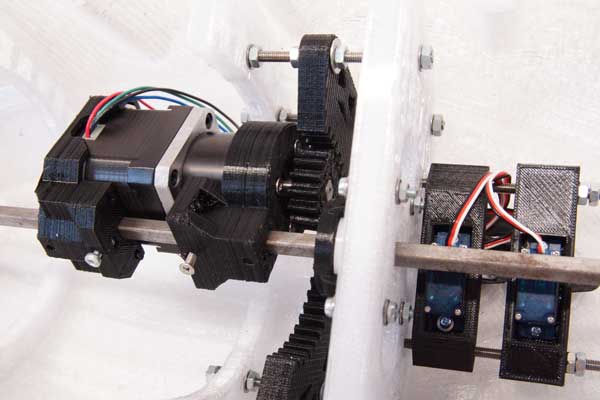 3D printing is used in various areas: In addition to inexpensive and fast prototypes, more complex functional components for low loads are also produced. The manufacture of components for trade fair construction has established itself as a further area of application, currently the complete hull model of the sailing boat for one demonstrator of the boat to show the sailing behavior of the finished boat.
3D printing is used in various areas: In addition to inexpensive and fast prototypes, more complex functional components for low loads are also produced. The manufacture of components for trade fair construction has established itself as a further area of application, currently the complete hull model of the sailing boat for one demonstrator of the boat to show the sailing behavior of the finished boat.
Using 3D printing technology, complex and ultra-lightweight components can be produced quickly. By assessing and evaluating the printed real parts, both the understanding of power flows as well as optimization possibilities of the component are brought closer.
For this project, the X1000 We mainly worked with the PET-G material, as this is much more stable than other materials when it comes to slow thermal deformation. The PET-G offers high breaking strength and dimensional stability at a temperature of up to around 80 °C. The material can be processed as easily as PLA and also has an extremely high surface quality, which makes post-processing of the objects superfluous if used accordingly. In addition, the material adheres very well to the standard PET film, with which there is almost no distortion or warping. The PET-G is classified as flame retardant according to B1 fire protection regulation, which is important for the Sailing Team when it comes to installing the electrics. PLA filament was also used for the gearbox and various smaller built-in parts.
You might also be interested in...

Infrared camera optimizes Laser Powder Bed Fusion 3D printing

Artificial Intelligence | trends and developments
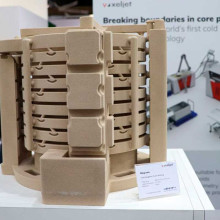
3D printing process | manufacturing of the future
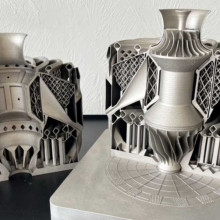
3D printer metal | Amazing Possibilities
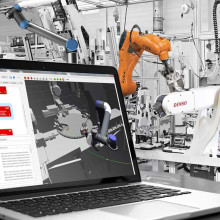
Programming Robots | software and controls

